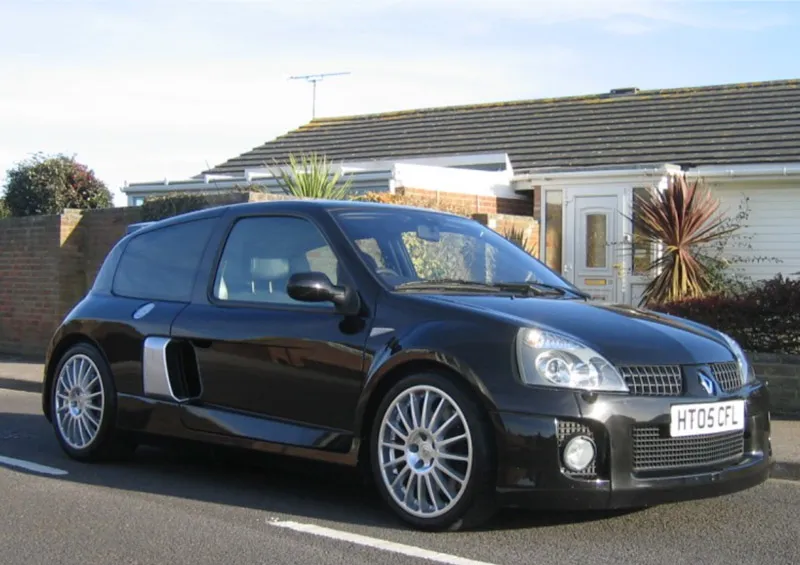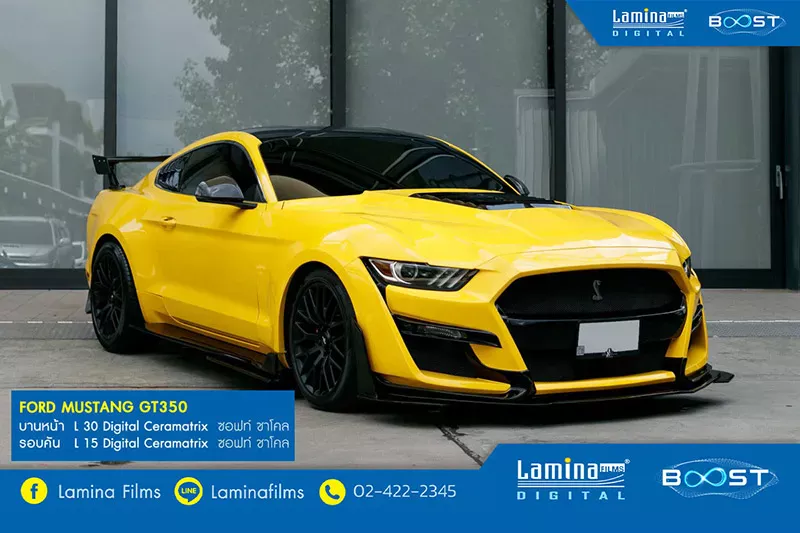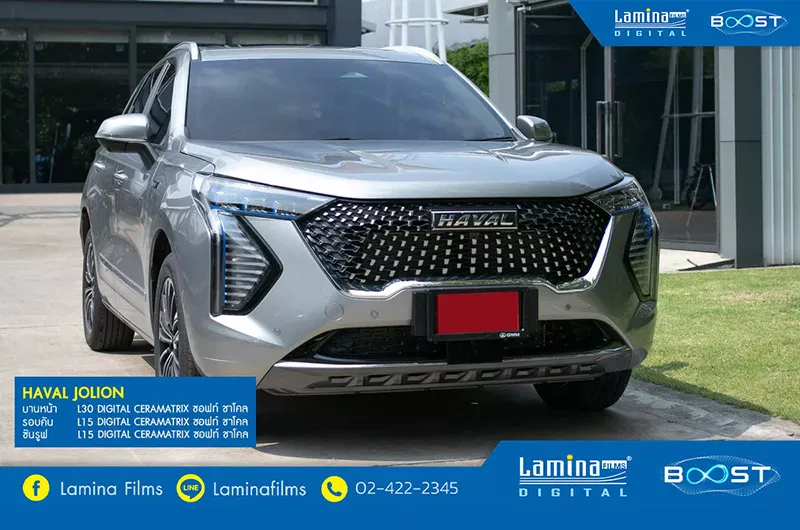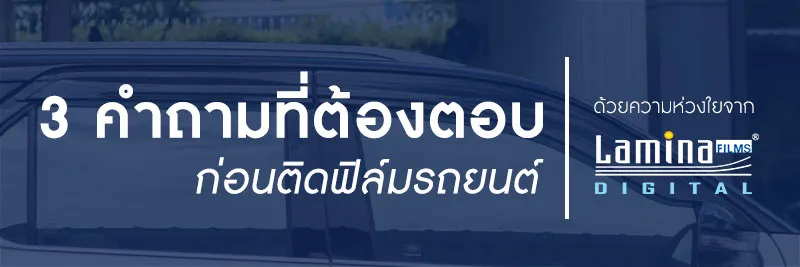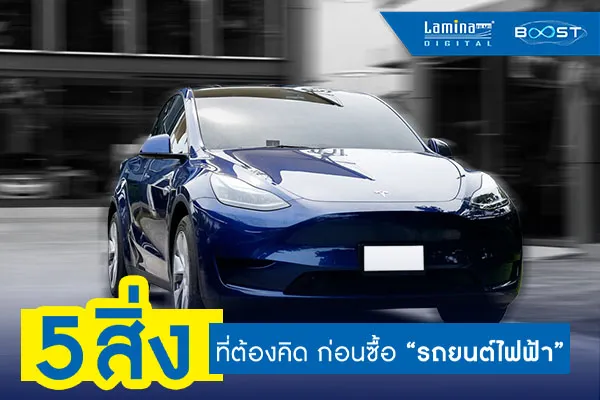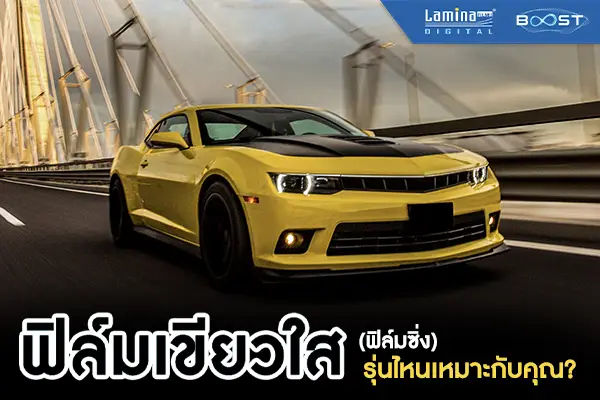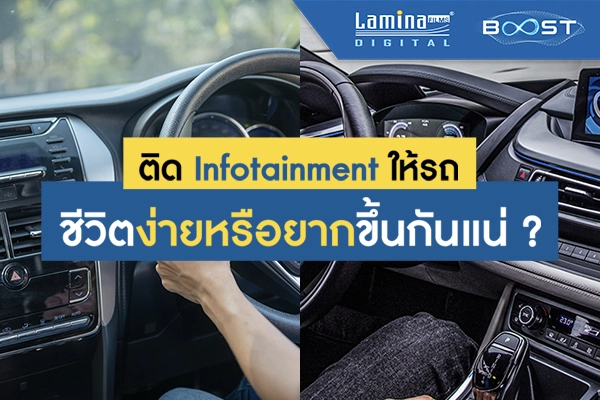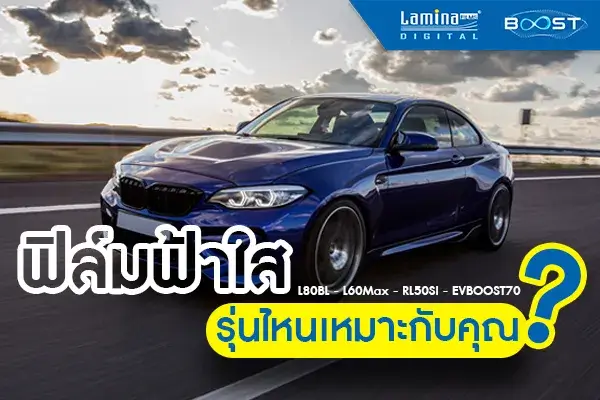How much tint darkness is right for you?
SHARE
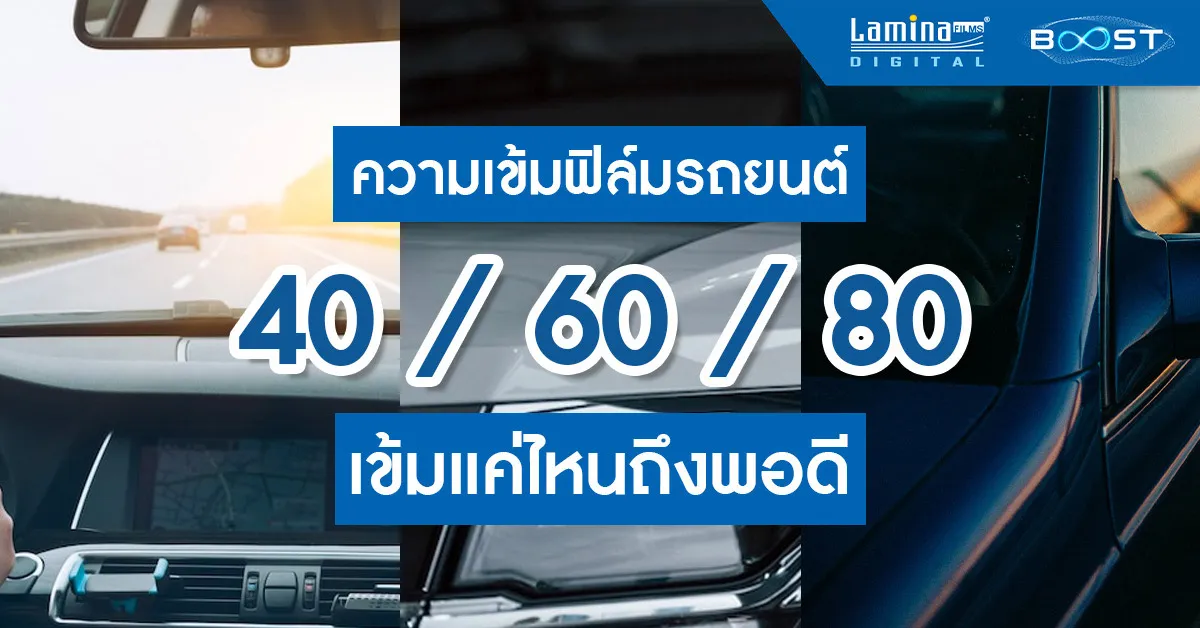
If you are searching for the information to decide before installing window film especially, the suitable tint% for your driving, if the answer is “Yes” we congratulate you here that you are choosing the right article but if not…you can think about gaining some more knowledge here ^^ because today we will share with you the right, in-depth and yet complete information that Thai drivers are familiar with which is “Film 40/60/80” .This is not some lotto number we have randomly given to you but we bring you together to solve a popular question in this window tinted film industry, what is it ? What is the difference?
| Selecting your interested topic, just click |
What is this number “film 40 / 60 / 80”?
Because Thai people is familiar with how they call the tint darkness based on how large the number is, to say the darker will have higher number for example film 60 is darker than film 40 and so on. If you want to compare based on transparent film for Thai people, it will be 0% window film for clear film and for the darkest film will be 100%
For the reason that the number 40/ 60/ 80 is widely used in our window film industry is that the window film shop in Thailand usually import a dark tint with high heat rejection level (because Thailand is a hot country). Therefore, a popular tint we always use in Thailand will be these 3 levels which are
Film 40 = less dark, still can be visible from the outside
Film60 = medium dark, suitable for general use
Film 80 = super dark, looked dark from exterior but with high privacy
To call them film 40/60/80 is also how the salesperson and the window film shop always like to use because of its easy understanding but have you ever curious?
| There are only 3 levels of tint darkness for chosen ? |
Short answer is no! As following the international standard from the United States, the way you measure the tint darkness can be arranged in more details and such measurement is called Visible Light Transmission (VLT) or the percentage of visible light which passes through the window
What is Visible Light Transmission (VLT)?
VLT is the tool to measure the amount of visible light passing through the window, the calculation is given in percentage. The low percentage means the less the light can pass through, while high percentage means more lights can transmit through glass, the clearer the tinted film will be, which now you can see it clearly that to measure by %VLT will be a lot more precise than “Film 40 / 60 / 80”method
However, if we implement Thai method of “Film 40 / 60 / 80” to compare with international standard %VLT method, the value will be as below:
Film 40 = 40 - 80% VLT
Film 60 = 20 - 39% VLT
Film 80 = 5-19% VLT
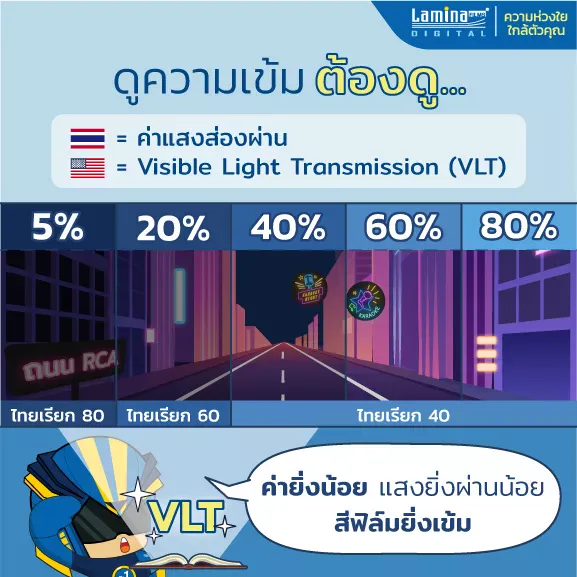
Photo shown the comparison between film 40/60/80
In Thai version versus %VLT as per international standard
In Thai version versus %VLT as per international standard
However, this value is not affected to the level of heat rejection as many people understand that “the darker film the better for heat rejection” If you want to know why, let’s check out our Lamina Digital Special Series a clear tinted film with high heat rejection. You can see that it is also very good in heat rejection compared to a dark tinted film. Thus, the tint darkness or %VLT should be one of the information you decide to choose the tinted film and do not forget to check out other values which you can have a further read from the infographic “Do not rely on one measurement when choosing the tinted film”
Related articleBefore installing window film, let’s get to know more about it whether manufacturing technology, unexpected benefit together with how to interpret each values in details in the article Before choosing anti-glare window film you must read this article |
Which factors determined tint darkness?
Right now, you know already that each series of tinted film has various %VLT (If you forget what it is, please check detail at above article) but which factor determine tint darkness? See the following:
This VDO Lamina will take you to see dyeing film process (the minute of 23.32)
Factor 1: dyeing procedure
In this step is to take a decided shade to dye with the film sheet which it will also affected to the tint darkness for example, the dyeing process of the Eastman Chemical factory ( leading film factory from the United States which Lamina films is the first importer in Thailand)
At the factory, it can produce more than 4,000 shades which is the result from blending between primary colors: red, yellow and blue and in between this procedure, the UV absorption substance will be mixed into the colors.
Factor 2: Some heat rejection material will affect to the color and tint darkness
After dyeing the color into the film, the next procedure is to coat with heat rejection material like metal (e.g. titanium, gold, silver, aluminum, copper etc.) and non-metal (e.g. ceramic or carbon). Some substances can affect the color and darkness such as Carbon (C) which its natural black color, once coating the film will be a bit darker.
Factor 3: the original color of window film
Which is not caused from the film itself but resulted from the distorted color after installing the tinted film on the glass which already has its original color. Each car’s window color will have a different color, darkness, transparency thus, resulting to a bit difference outcomes after film installation.
For example, the car window up from 90’s will have bronze tint while new car model up from year 2000 will have kind of green tint and some model will come up with their privacy glass from the factory which has some darkness like already installed with a tinted film.
Example of the car with Privacy Glass on the back dual window
Source: Steve Coulter Performance Cars
Source: Steve Coulter Performance Cars
Factor 4: Window car size
Another factor which affect the tint darkness is originally occurred from the car itself and does not has any results on the film features but affecting to the feeling when looking from outside is window car size (especially, the front windscreen and rear windscreen) and the quantity of the window on the car (such as the sun roof) to say..
| The car with a large area of glass will have many light channels to get through thus, it will be so clear to be seen rather than the car with less area of glass |
Therefore, Lamina films installed team would like to tell you that if you come up with the Film 60 on your sport car (usually comes with front windscreen and front dual windows, total 3 windows) it will looked dark like film 80 on general city car.
Let’s check out this example, Ford Mustang GT350 which is the representative of the 2 doors sport car with less window and Haval Jolion which is the representative of SUV car with many windows, these 2 cars have the same model and color of film which is L15 Digital Ceramatrix, you can see the difference as below pictures
2 doors sport car
with front windscreen used L30 Digital Ceramatrix
and the rest with L15 Digital Ceramatrix
with front windscreen used L30 Digital Ceramatrix
and the rest with L15 Digital Ceramatrix
4 doors SUV car with sunroof
installed L30 Digital Ceramatrixfront windscreen
and the rest +sunroof with L15 Digital Ceramatrix
installed L30 Digital Ceramatrixfront windscreen
and the rest +sunroof with L15 Digital Ceramatrix
|
To compare like this, it is so clear isn’t it? Even though you use the same film model but once you install on the different size of car windows,
no matter it is sport car, city car, SUV or a pick-up, the result of film color will be different |
Things need to be answered before selecting tint darkness
Which time you drive most?
Whether at day or night …which time you drive more frequently? If your lifestyle always rely on the day, you can select dark tinted film such as front windscreen with 60, the rest area with 80 but if you are more out at night, we suggest to use 40 at the front windscreen (or Visible light transmission/VLT at the front windscreen not less than 30%) then the rest area with 60.
Do you use rear windscreen when backing up?
If you use rear windscreen when you do reverse parking, the darkness of the window should not be darker than 60. If you do not rely on the rear windscreen but prefer the LCD monitor screen to check the backside, no matter the darkness of the film you use, it will be alright.
What is your eye condition?
If you have eyesight problems such as short sight, long sight and astigmatism, we would like you to pay attention on your visibility when selecting tinted film. Lamina suggest that you better stick with film 40 first (Visible light transmission or VLT value at the front windscreen is not less than 30%) besides, you should install less reflectivity film (Visible light rejected or VLR value is not more than 15%) in order to reduce reflectivity while driving at night because safety always need to come first
| We highly suggest Lamina Digital Mystery Boost car tinted film with Digital Xtreamer 100% technology and DigitalBoost® innovation for your eyes |
Summary
Film 40/60/80 is the measurement you call in Thailand only, the higher the value the darker it is while in contrast, international standard will use %VLT (Visible light transmission) To say, the more % the more transparency of the film. After all, you need to select the darkness that is suitable for your use besides, the beauty but also, for your own safety.
Please check and study carefully before installing your window film because it will be on your car for a long period. For who still has some curious questions about window film, you can have further studies at our other articles.
| Articles - Wanna have tinted film installed, how much we need to have? How to calculate? If you are curious, please follow the article “How much of the window film installation? What is it based on?” - Get to know “Ceramic film” and “Mercury tinted film” |
For window tinted film we still have various colors and models available for your selection!
If you still have no idea what to find, Lamina suggest you try window tint software as below first
เว็บไซต์นี้มีการจัดเก็บคุกกี้ เพื่อมอบประสบการณ์การการใช้งานเว็บไซต์ของคุณให้ดียิ่งขึ้น รวมถึงให้เราสามารถมอบข้อเสนอ กิจกรรมส่งเสริมการขาย เลือกเนื้อหาที่เหมาะสมกับคุณอย่างเป็นส่วนตัว
ท่านสามารถศึกษา นโยบายการเก็บและใช้คุกกี้ ได้ที่ลิ้งค์นี้ ใช้งานเว็บไซต์นี้เป็นการยอมรับช้อกำหนดและยินยอมให้เราจัดเก็บคุกกี้ตามนโยบายที่แจ้งในเบื้องต้น
ยอมรับ



